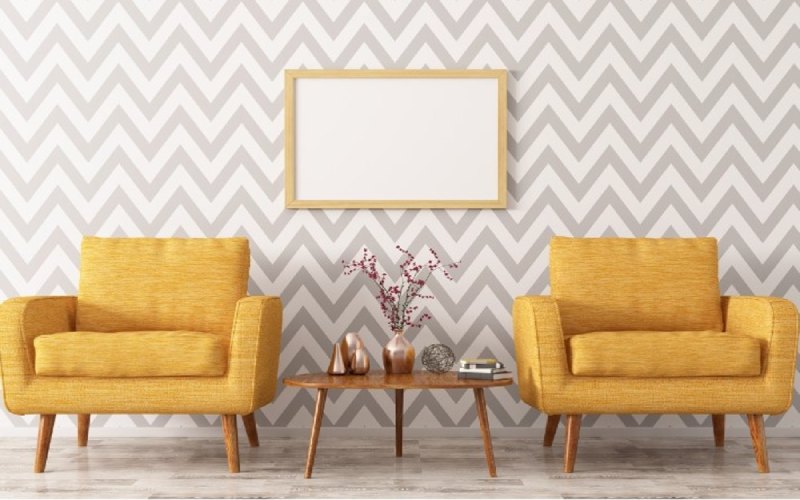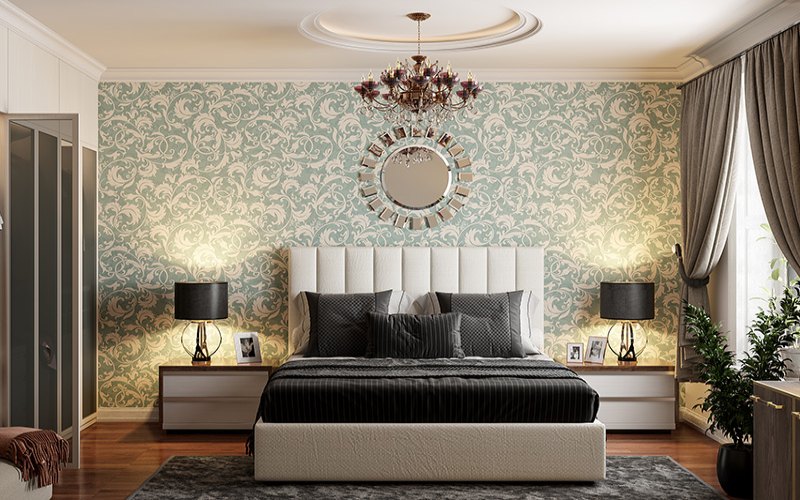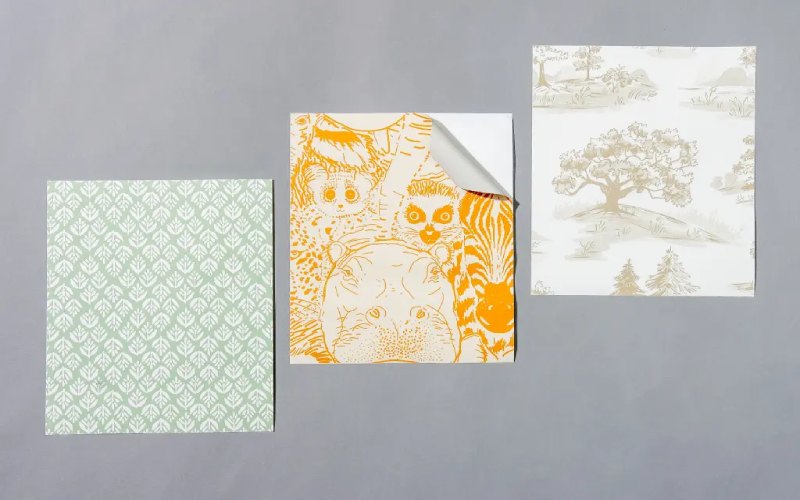Wallpaper is one of the simplest ways to change the interior design. You may simply make dramatic changes to your interior and alter the appearance of your decoration with this highly effective tool. Prior to selecting the color and theme of your wallpaper, make sure that it can be readily washed so that you can use it more quickly.
Wallpaper kinds’ antecedents
The European aristocracy developed a taste for wallpaper created using the woodblock printing technique during the Renaissance.
Since the Medieval Ages, wealthy people have hung magnificent carpets from their homes’ walls. The room’s beautiful carpets added color and served as an insulating layer between the inner area and the stone wall, keeping the heat inside the room.
These carpets were incredibly pricey, though. Only very wealthy people could therefore afford them. The semi-affluent class used wallpaper to decorate their rooms because they could not purchase these carpets due to the expensive cost or the wars that halted international trade.
Early wallpaper often had patterns resembling those of carpets, and it was sometimes just hung on the wall like carpet, while other times it was fastened to the wall like the current manner.
The majority of the time, printed pictures were pasted on the wall rather than being framed and mounted. It’s likely that the very large dimensions of these printed pictures, which were also multi-sheets, were produced specifically to be pasted on the wall.
Such paintings were once produced by certain well-known artists. Featuring “Albrecht Dürer,” a professional in the field of producing ornamental prints and huge pictures for hanging on walls.

Nusra’s Arch, which was printed and finished in 1515 on Maximilian I’s, Holy Roman Emperor’s, request, was the largest printed artwork. 700 copies of this wall hanging, which had enormous dimensions of 3.57 x 2.95 meters and used 192 sheets of paper, were printed during the first printing period. After being hand painted, they were used in palaces, particularly urban meeting halls.
There aren’t many surviving instances of the early wallpaper’s repeating patterns, but there are still plenty of authentic clichés that depict the period’s beautiful designs.
One of the top nations in the wallpaper business in England. The earliest piece of wallpaper still in existence in England was printed in London in 1509.
As Henry VIII was excommunicated by the Catholic Church, other nations severed links with England and stopped exporting carpets there, which led to a rise in the usage of wallpaper. The lords and nobility turned to wallpaper because England lacked the expertise to make carpets.
Introducing types of wallpaper
The religious government ceased producing wallpaper under Oliver Cromwell’s rule because it was thought to be a pointless endeavor, but after Charles II’s restoration, bankers once more started to request wallpaper.
After Cromwell’s death, individuals began purchasing opulent household furnishings that were outlawed under his rule because his authority had created a culture of boredom among the populace.
paper wallcovering
This wallpaper is extremely thin and cannot be cleaned. It lasts for one to two years and is fixed to the wall using special wallpaper glue. The fact that paper wallpaper is less expensive and more accessible than other types of wallpaper is by far its greatest benefit. This style of wallpaper also has the benefit of being simple to install and take down.
Vinyl-coated PVC wallpaper
The specialists at Extreme Walls claim that this kind of wallpaper is sturdy, long-lasting, cleanable, and scratch-resistant. After being mounted on the wall, it is tough to rip and lasts for up to 5 years. The market offers vinyl-coated PVC wallpaper in small sizes of 5 square meters and large sizes of 16 square meters. This kind of wallpaper is excellent for areas like kids’ bedrooms since it can be cleaned.
There are numerous types of vinyl coatings, which are outside the purview of this article. the Vinyl coating, also known as polyvinyl chloride PVC, is plastic with countless applications, including use as a coating for wallpaper sheets. When purchasing washable wallpaper, be sure to read the word “washable” carefully.
Nano wallpaper
Nano wallpaper is one sort of wall covering. In addition to the benefits of PVC wallpaper, wallpaper created using nanotechnology has further advantages. Because of the unique technology employed in their creation, they are sound and heat insulated, hypoallergenic, anti-soot and dirt, do not tear, and are sunshine resistant. Because technology was used in the manufacturing of this sample of wallpaper, it costs more than other wallpapers.

Velvet wallpaper with texture
Patterned fabric or plastic velvet pieces are used to create velvet wallpaper. This style of wallpaper has a fabric or PVC background, but it cannot be washed with soap because it contains velvet fragments. Wallpaper with texture has a unique appeal and, unsurprisingly, costs more than plain wallpaper. Dark colors and traditional motifs are typical of velvet wallpaper. Velvet wallpapers are the greatest choice if your home is decorated in a traditional and opulent manner because of their fabric and velvet texture, which can be readily matched with your furniture.
3D wallpaper
3D wallpaper is one of the well-liked and washable Extreme Walls wallpaper varieties. When viewed from a three to four meter distance, 3D wallpapers appear to be quite noticeable. In reality, 3D wallpapers are made in such a way that the pattern and design on them look exceptional because of the unique shadows provided.
Your 3D wallpapers will look perfectly natural if they feature designs like decorative stone, stone bits, brick, or wood. By using tailored and slanted lighting and placing the wallpaper in various locations, you may double the three-dimensionality of the area and add a new dimension.
Wallpaper made of natural fibers
Wallpaper made of natural fibers is one type that is expensive and hard to get. This wallpaper is produced from real Finnish wood, and it has all the benefits of washable wallpapers, including being hypoallergenic and compatible with the environment. The fact that this wallpaper has extremely few fragments of wood and leaves woven into its fibers increases its attractiveness because of how naturally inspired these wallpapers are in their design. They produce a really nice and natural atmosphere as a result.

